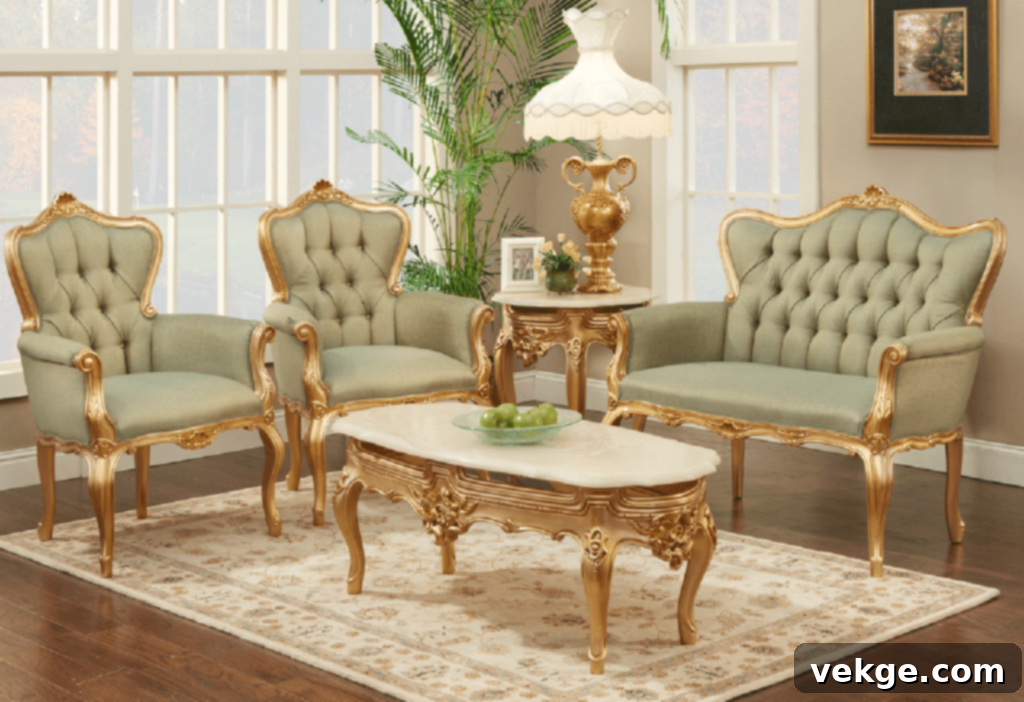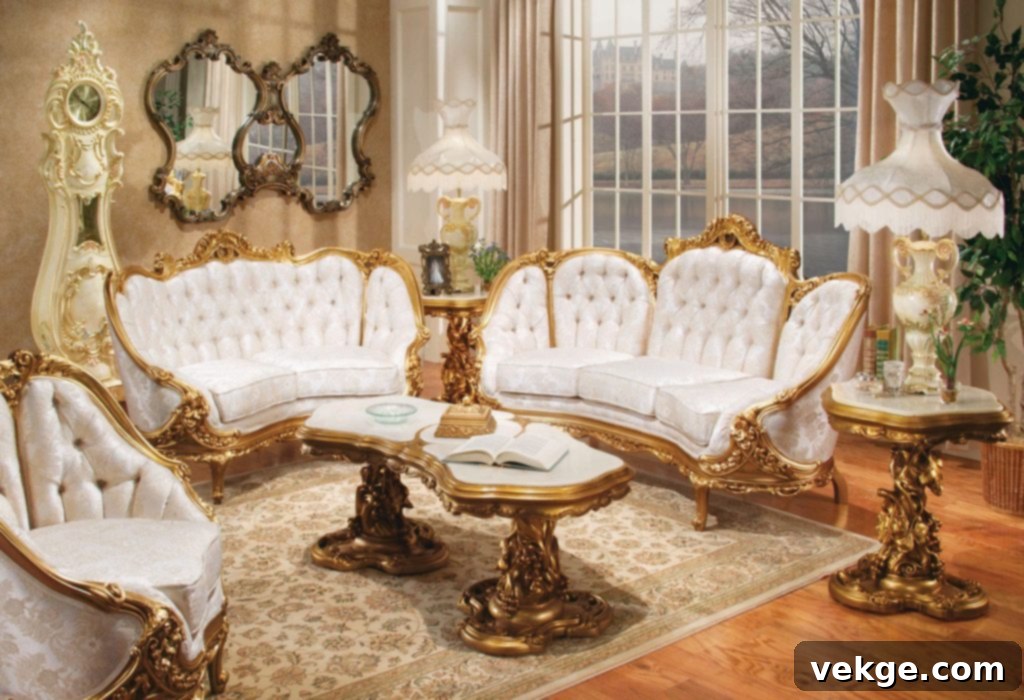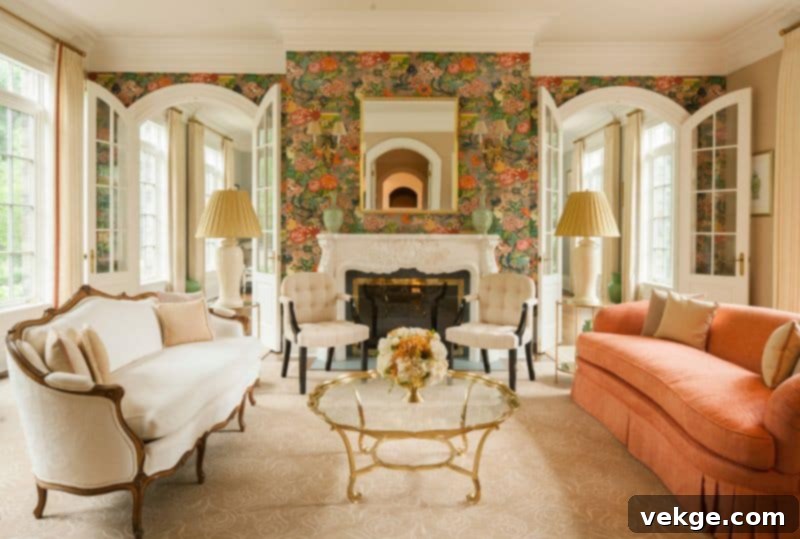French Provincial Furniture: Your Ultimate Guide to Timeless Elegance and Decor
Interior decor is a transformative art, allowing you to curate spaces that reflect your personality and aspirations. As you embark on the exciting journey of shaping your dream home, exploring diverse design concepts is key to uncovering the perfect aesthetic. Among the myriad of styles, one that consistently captures hearts with its blend of rustic charm and refined sophistication is French Provincial. In this comprehensive guide, we’ll delve deep into the captivating world of French Provincial decor, exploring its defining characteristics and providing actionable insights on how to seamlessly integrate its timeless beauty into your contemporary living spaces.
French Provincial furniture is renowned for its stunning architecture, inherent utility, and an understated rustic charm that speaks volumes. This unique combination explains its burgeoning popularity in modern interior design, offering a refreshing alternative to more stark or minimalist trends. If the term “French Provincial” is new to your lexicon, fret not. This article is crafted to be your definitive resource, providing all the essential information to grasp the fundamentals of this enchanting furniture style. Our aim is to empower you with the knowledge to make informed decisions for your next interior design adventure. So, let’s unlock the secrets of French Provincial elegance!
What is French Provincial Furniture? A Glimpse into its Rustic Roots and Refined Appeal

At its heart, French Provincial furniture is a style deeply inspired by the idyllic countryside and charming villages of France, particularly during the 18th century. It emerged as a more accessible, yet still elegant, interpretation of the opulent Rococo and Baroque styles prevalent in Parisian royal courts. While Parisian aristocracy favored gilded bronze and exotic woods, the provincial gentry and affluent peasants sought to emulate this grandeur using local, more readily available materials and simplified designs. The result was a distinctive aesthetic characterized by its simplicity, inherent country charm, and a robust elegance that has stood the test of time.
These pieces are often recognized by their artful depiction of intricate, yet not overly ornate, details. Each piece of furniture inspired by French Provincial architecture feels like a handcrafted work of art, reflecting the skill and dedication of local artisans. A hallmark of French-style furniture is the graceful curve of its legs, often in a classic “cabriole” style, which not only enhances their aesthetic appeal but also contributes to a sturdy and durable construction. This elegant curvature adds a sense of movement and lightness, preventing the furniture from appearing overly heavy or cumbersome.
Historical accounts frequently highlight the use of hardwoods like oak by ancient French craftsmen. Oak was a preferred material due to its hardness, ease of carving, and exceptional longevity, ensuring that these pieces would endure for generations. Today, the exquisite style and inherent durability of this furniture offer significant benefits to modern interiors, providing a sense of heritage and quality that is often lacking in mass-produced items.
The typical color palette for French Provincial furniture tends towards lighter, more muted tones such as pastels, creams, whites, and pale blues or greens. These soft hues create a serene and inviting atmosphere. Complementing these gentle backgrounds, decorative designs and accents are often rendered in gold, a pale yellow, or a natural wood finish. The harmonious blend of white, cream, or pastel tones with gold or yellow carvings has profoundly captured the attention of contemporary interior designers. This synergy is particularly relevant today, given the increasing integration of these sophisticated, light-filled color schemes into modern architectural and design trends. With such a compelling array of qualities—from historical depth and artisanal craftsmanship to aesthetic versatility and a soothing color scheme—it is hardly surprising that French-style furniture has firmly established its revered position in the modern home. A significant factor in its enduring popularity is the remarkable flexibility of these furniture pieces, allowing them to effortlessly blend with a vast spectrum of contemporary interior designs, bridging the gap between old-world charm and modern sensibility.
Defining Characteristics of French Provincial Furniture Style
To truly appreciate and effectively incorporate French Provincial furniture, it’s essential to understand its core characteristic features:
1. The Enduring Appeal of Natural Woods
Historically, authentic French Provincial furniture was almost exclusively crafted from robust hardwood varieties readily available in the French countryside. While modern interpretations may utilize a wider range of materials, the original pieces largely featured oak, cherry, walnut, and sometimes mahogany. These woods were chosen not only for their inherent durability and strength but also for their beautiful, warm tones and distinct grain patterns. Oak, with its pronounced grain, offered resilience; cherry, known for its reddish hue, developed a rich patina over time; and walnut provided a darker, more refined appearance. These natural characteristics contributed significantly to the furniture’s rustic yet elegant appeal, and today, pieces are often finished with waxing, painting, or light distressing to enhance their aged, lived-in quality.
2. Graceful Curves and Artisan Carvings
Curves and carvings are arguably the most iconic and integral elements of French Provincial furniture. Unlike the often stark lines of modern design, these pieces embrace fluidity and organic forms. The signature “cabriole” leg, resembling an animal’s leg with a gentle S-curve, is a classic example, appearing on chairs, tables, and cabinets. Beyond the structural curves, furniture often features delicate, hand-carved motifs. These commonly include floral patterns such as roses or daisies, acanthus leaves, shell designs, or rocaille elements, all inspired by nature and classical art. These intricate details, often found on apron fronts, crests, and drawer pulls, bestow a distinctly feminine, sophisticated, and artistic touch, transforming each item from a mere functional object into a decorative masterpiece.
3. Elegant Decorative Accents and Hardware
French Provincial furniture is celebrated for its tasteful decorative elements, which add character without overwhelming the piece. Beyond the carvings, these pieces often incorporate subtle yet impactful accents. This can range from elegant, muted gold or brass embellishments on key areas to more understated painted finishes that allow the natural wood grain to show through. Hardware, such as hinges, handles, and escutcheons, is typically made from bronze, brass, or wrought iron, often featuring intricate, period-appropriate designs. Furthermore, the upholstery chosen for French Provincial seating is a significant decorative aspect, frequently featuring classic patterns like toile de Jouy (depicting pastoral scenes), damask, stripes, or small floral prints, all contributing to the furniture’s distinctive allure and charm.
4. A Serene and Soft Color Palette
The color scheme of French-style furniture plays a crucial role in establishing its characteristic ambiance. It primarily revolves around a soft, neutral, and often muted palette. Common shades include varying tones of cream, antique white, ivory, pale grey, delicate pastels like pale blue, sage green, and soft yellow. These colors are chosen to evoke a sense of calm, tranquility, and natural light, reflecting the sun-drenched landscapes of the French countryside. This gentle color scheme allows the intricate carvings and graceful forms to take center stage without being overshadowed by bold or vibrant hues. The occasional gold or pale yellow accent motifs blend seamlessly with these understated backgrounds, adding a touch of understated luxury and warmth without overpowering the overall sophisticated and simple aesthetic.
Seamlessly Incorporating French Provincial Furniture into Your Modern Home

With a deeper understanding of French Provincial furniture, the next exciting step is to consider how these exquisite pieces can enrich your contemporary living spaces. The key to successful integration lies in achieving a harmonious balance between the rustic elegance of provincial elements and the clean lines of modern design. The goal is to create a home that feels warm, inviting, and sophisticated, rather than one that appears to be a direct replica of a medieval French film set. You’ll want to soften the overall tones and strategically select pieces that complement and elevate your existing interior.
Given the intricate detailing and decorative accents inherent in French-style furniture, thoughtful placement is paramount. Avoid overcrowding your space; if too many ornate pieces are placed in close proximity, they can create a cluttered and visually heavy look. Instead, allow each significant piece to breathe and serve as a focal point. Blending these classic pieces with modern furniture and decor is an artful approach to striking the perfect balance between contemporary flair and French old-world charm. For instance, imagine pairing elegant French-style dining chairs with a minimalist, contemporary dining table, or placing a sleek, modern lamp atop a beautifully carved French-inspired console table in your living room.
Strategic Styling Tips for Every Room:
- Living Room: Introduce a plush French Provincial sofa or a pair of armchairs upholstered in linen or toile. Balance their ornate nature with a simple glass or metal coffee table, and complement with modern abstract art or geometric patterns in textiles.
- Dining Room: A grand French Provincial dining table, perhaps with a distressed finish, can be stunning. Mix and match chairs – keep some Provincial, but add a few modern chairs at the ends for an eclectic touch. A contemporary chandelier can also provide an interesting contrast.
- Bedroom: An ornate Provincial bed frame can be the centerpiece. Pair it with crisp, white modern bedding and simple nightstands, perhaps in a contrasting dark wood or metal. Add a French-style dresser or armoire for a touch of romantic elegance.
- Entryway: A narrow French Provincial console table with a large, gilded mirror above it creates an immediate sense of grandeur and welcome. Keep other elements simple to let these pieces shine.
Beyond furniture placement, consider the role of accessories and textures. Integrate natural materials such as linen, cotton, and wool in your textiles to enhance the rustic feel. Add decorative elements like antique clocks, ceramic vases, wrought iron accents, and strategically placed mirrors (especially those with ornate, gilded frames) to echo the Provincial aesthetic. Soft, ambient lighting, perhaps from a classic chandelier or wall sconces, will further enhance the warmth and inviting atmosphere.
Finally, and perhaps most importantly, do not shy away from infusing your personal touch into your space. While adhering to a specific style, your home should ultimately reflect you. Incorporate souvenirs from your travels, cherished handmade pieces, or curated art that speaks to your unique style. These personal elements bring out a distinct character for your home and tell a story to anyone who enters.
Lastly, never compromise on the functionality of the space. While aesthetics are vital, your home is, first and foremost, a place for living. Ensure that pathways remain easily accessible, furniture arrangements facilitate everyday usage, and the overall design supports a comfortable and practical lifestyle. The beauty of French Provincial style is that it inherently offers both beauty and utility, making it a perfect choice for a truly livable, elegant home.
Conclusion: Embracing the Timeless Beauty of French Provincial Style
French Provincial decor, with its captivating fusion of rustic charm and sophisticated elegance, continues to be a highly sought-after trend in contemporary interior design. It offers a warm, inviting, and aesthetically rich alternative to more minimalist or stark approaches, allowing homeowners to infuse their spaces with character and history. If you’re yearning to bestow upon your home a French-inspired makeover, embarking on the journey by integrating key French Provincial furniture pieces into your interior is an excellent starting point.
As we’ve explored, the defining characteristics of French Provincial furniture include its reliance on warm, natural wood tones, intricate yet graceful carvings, delicate detailing, and a serene, soft color palette. These elements collectively contribute to a style that is both grand and approachable, sophisticated and comfortable.
When embracing this beautiful style within your interior, remember that the most crucial aspect is to artfully blend these classic French Provincial elements with modern design components. The aim is to create a dialogue between the old and the new, ensuring that neither style overpowers the other, but rather enhances it. This harmonious integration prevents your space from feeling dated and instead cultivates a timeless, layered aesthetic that feels both fresh and rooted in tradition. Maintaining a sense of continuity and fluid visual flow is paramount when introducing French Provincial furniture into your space, ensuring that each piece contributes to a cohesive and inviting environment.
We sincerely hope this comprehensive article has provided you with valuable insights and inspiration for exploring the exquisite world of French Provincial furniture and decor. Feel free to share your thoughts and questions in the comments below – we love hearing from our readers!
